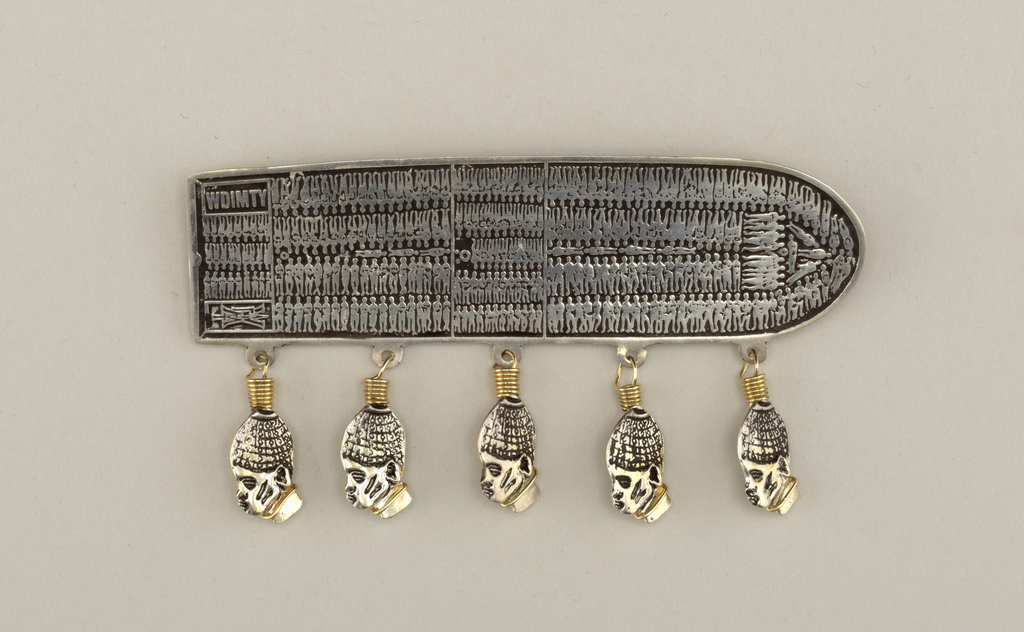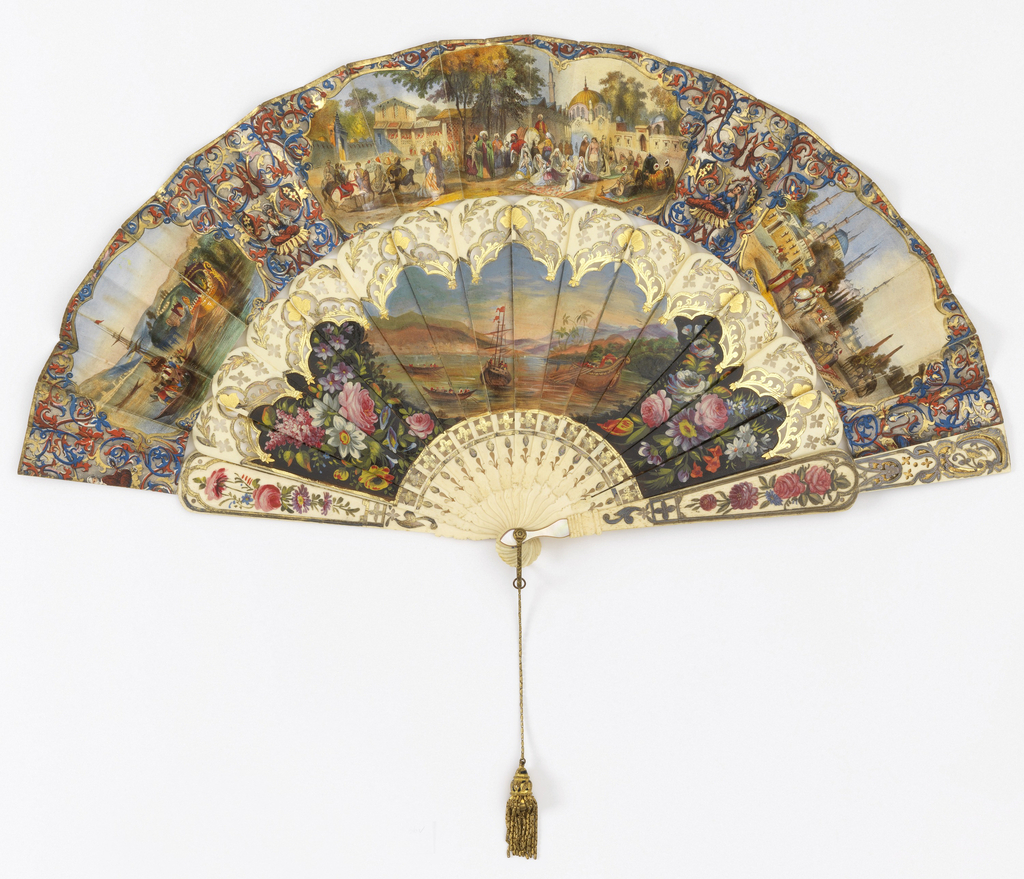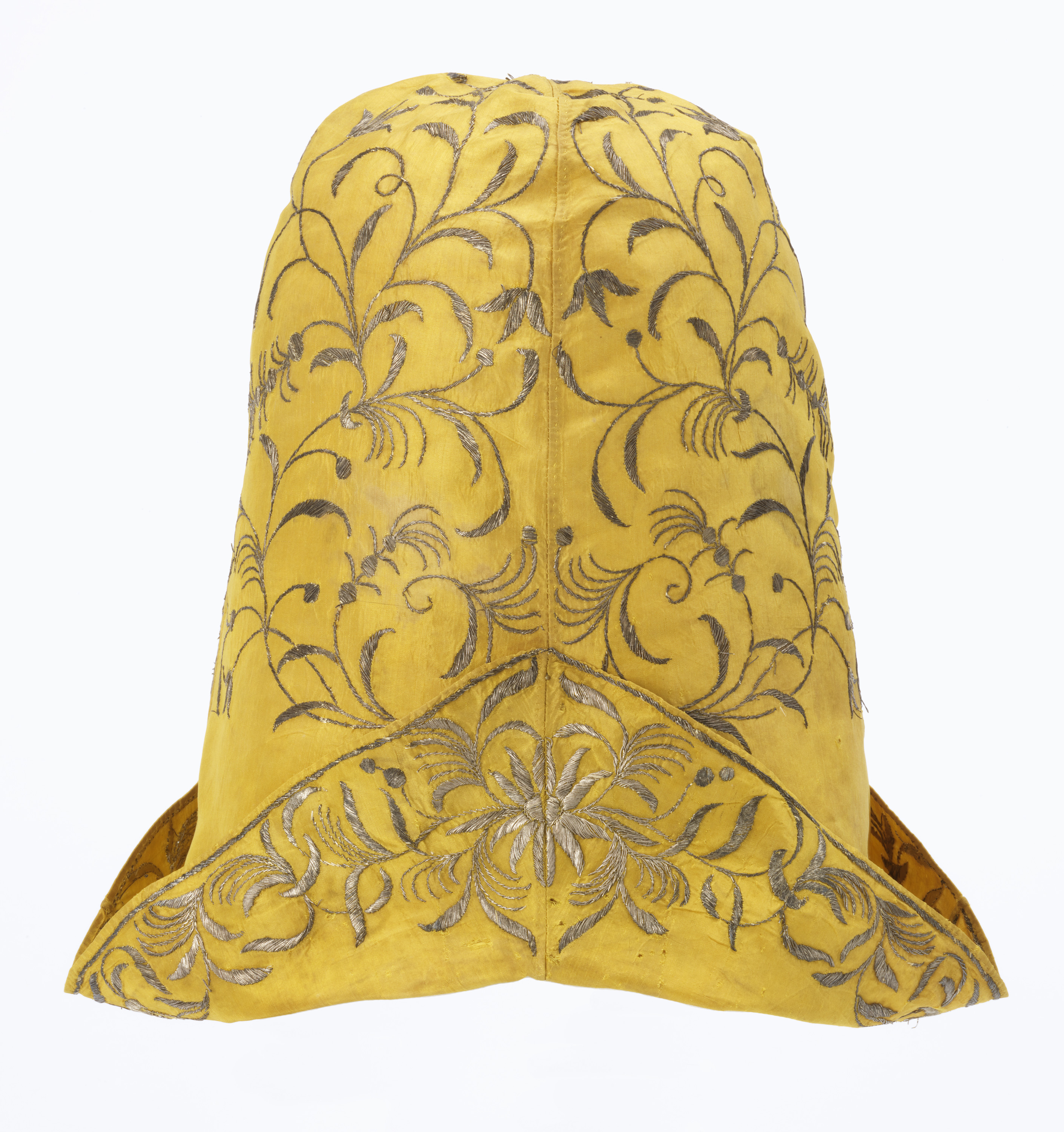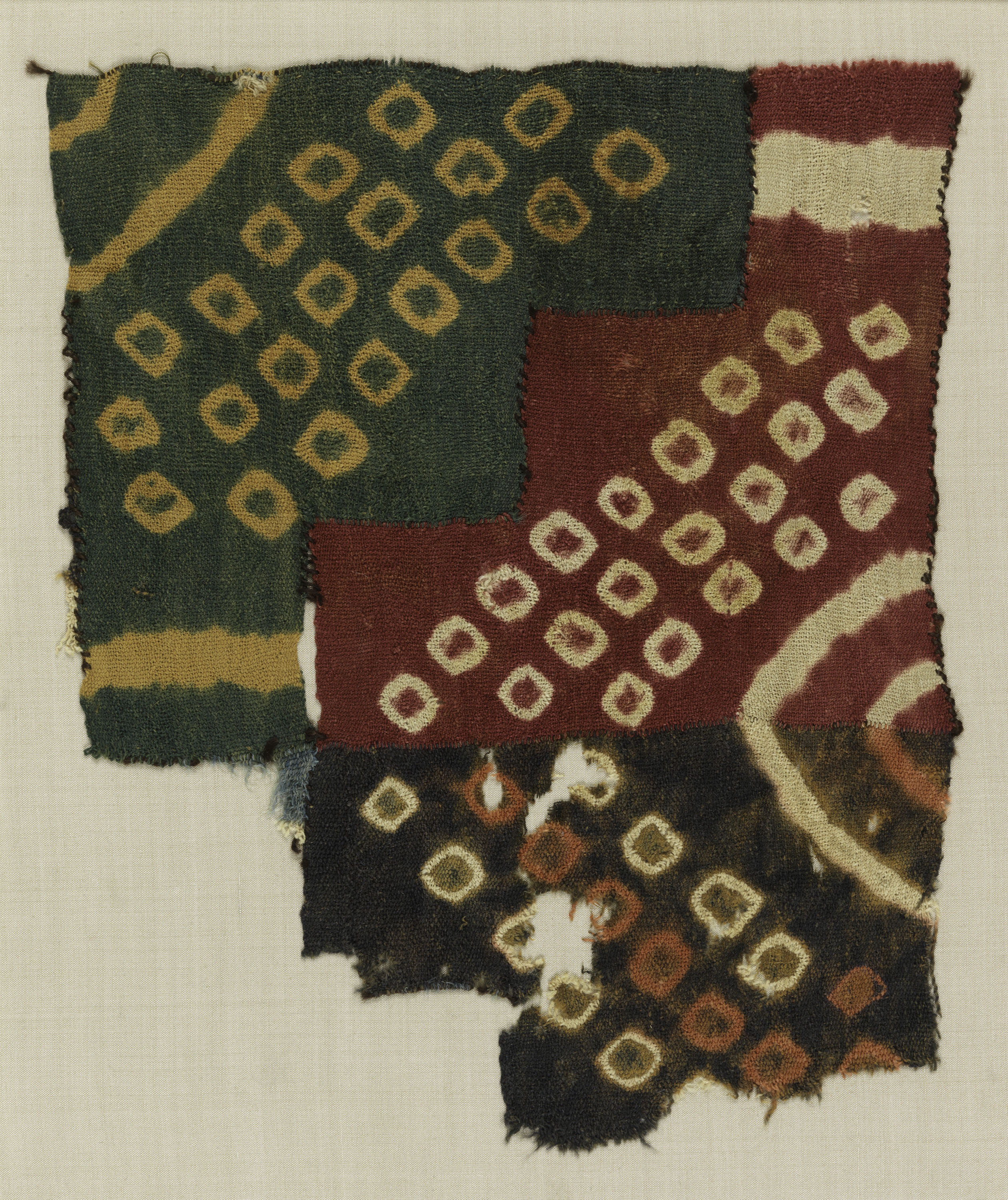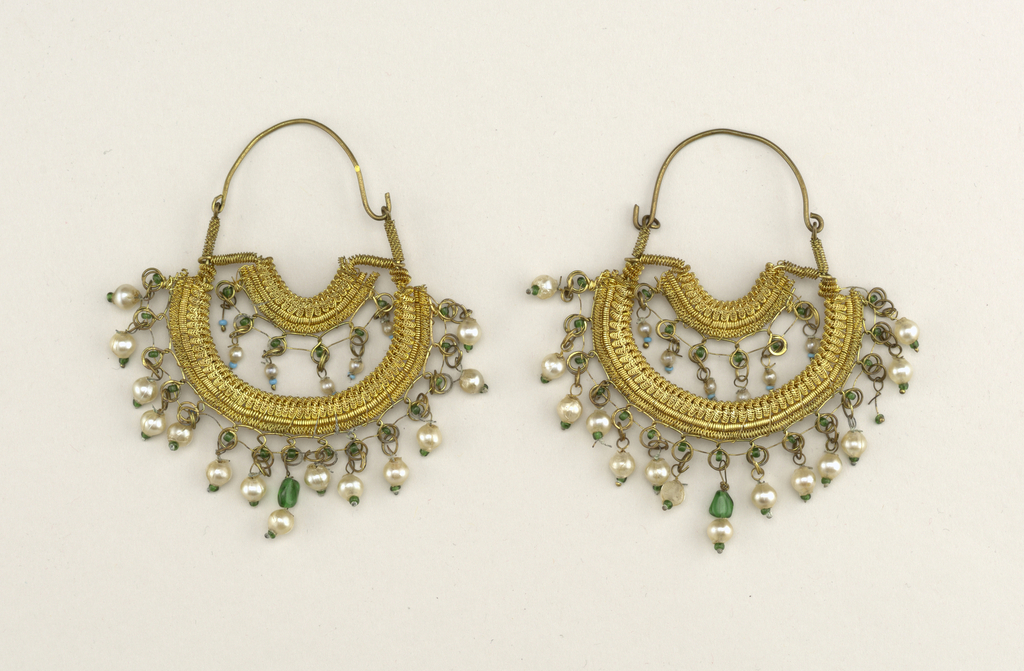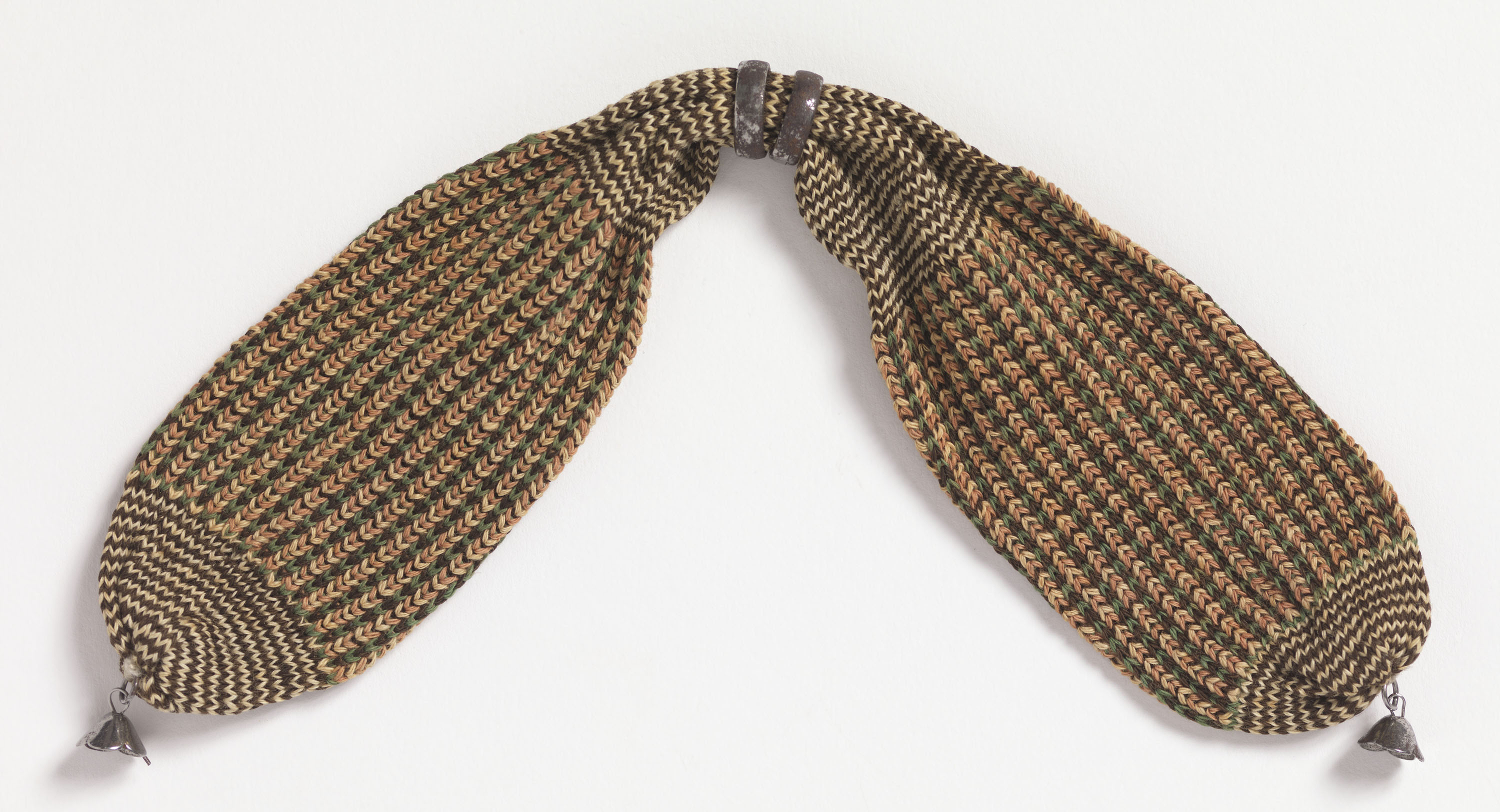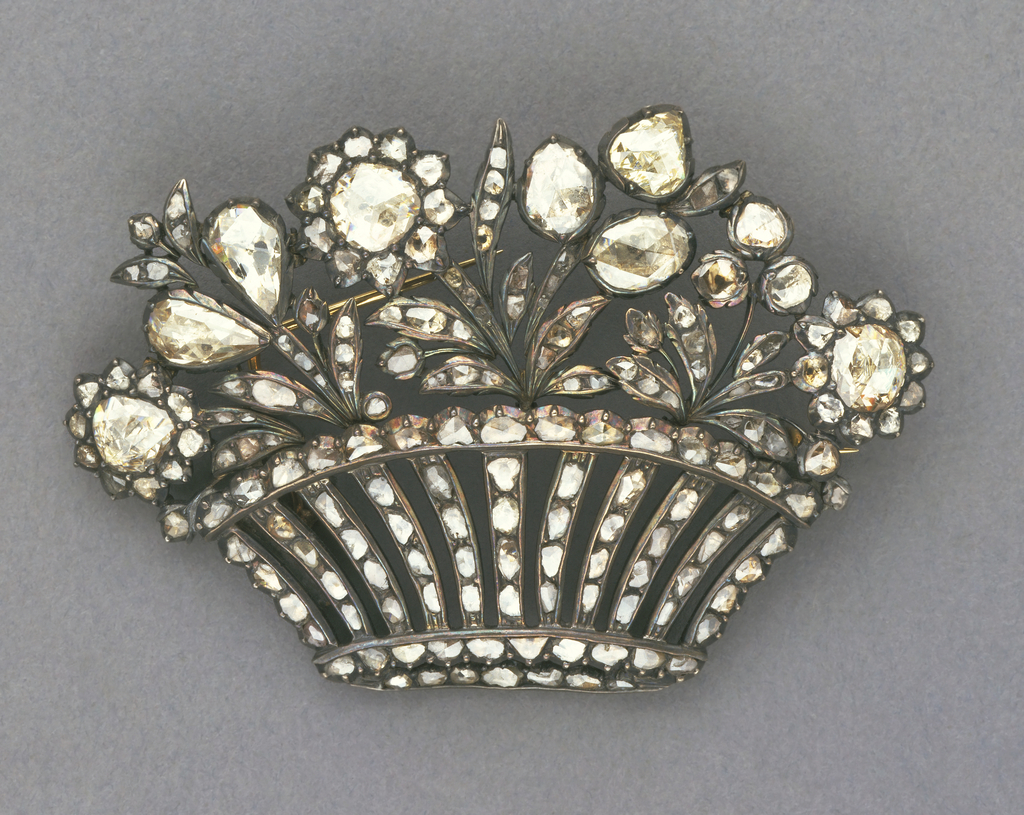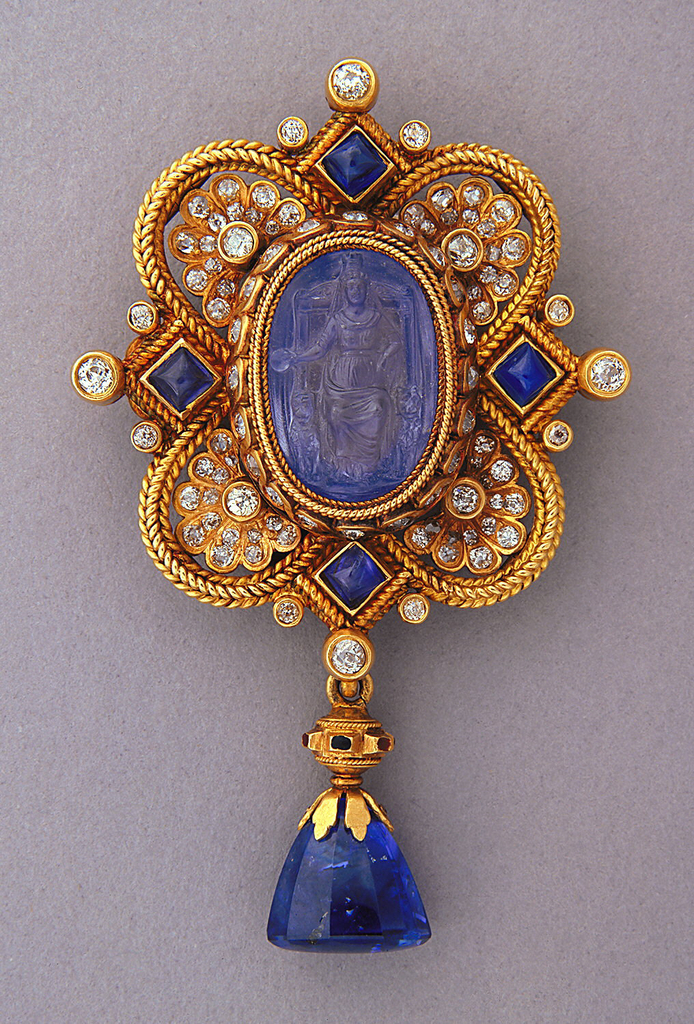Born in the Bronx, Phyllis Bowdwin is an activist, writer, educator, mixed-media artist, and designer. Inspired by her African ancestry, Bowdwin made this brooch that depicts in diagrammatic form the hull of a slave ship and the arrangement of its tightly packed human cargo during the Middle Passage. In this version, five heads of African...
This fan’s printed scenes of the Ottoman Empire are after the English architect and landscape painter Thomas Allom (1804-1872), whose drawings were engraved and published in the 1840 book, Constantinople and the Scenery of the Seven Churches of Asia Minor. [1] The center image is of the Arut Bazaar, a female slave market in Constantinople....
This 18th-century hat is called a nightcap, but it probably was not worn to bed. A man would use this cap to keep his head warm when he removed his wig, since a wig required short hair or a shaved head. A wig was proper attire for men of almost any status in 18th century...
The wild and syncopated play of color and pattern in this tie-dyed textile from ancient Peru seems to counter the meticulous and steadied hand of the Andean weaver. The fabric was in fact specially woven in discreet, stepped-shaped units that were cut apart and re-assembled after being tie-dyed, mixing up the variously dyed sections. Several...
The English word filigree derives from the Latin filum, a thread, and grano, a grain or bead, through the Italian term filigrana. Filigree exists as a design technique even further back in antiquity than ancient Rome. While now a specialization, earlier jewelers, especially in Egypt, the Middle East, Italy, France and Spain, considered it part of...
Miser’s purses are oblong pouches primarily used to carry coins. The purses usually have center slit openings with pairs of sliding rings to secure coins in the purses’ ends, though sometimes clasp closures are used. The purses probably evolved from the 16th-century practice of storing coins in the toe of a stocking. Miser’s purses were...
This brooch of flowers in a basket is made of diamonds set in silver with a gold backing. The diamonds on this brooch are so numerous and so large that for a time, it was thought that the diamonds were fake and made up of a type of fake stone known as paste stones, which...
The Castellani jewelry firm (1814 – 1927) became known for its “Italian Archaeological jewelry,”[1] which consisted of copies and imitations of Roman, Greek, and Etruscan jewelry. The firm’s works in this style became especially popular starting in the 1850s due to a rise in nationalism as a result of efforts to unify Italy, though they...
